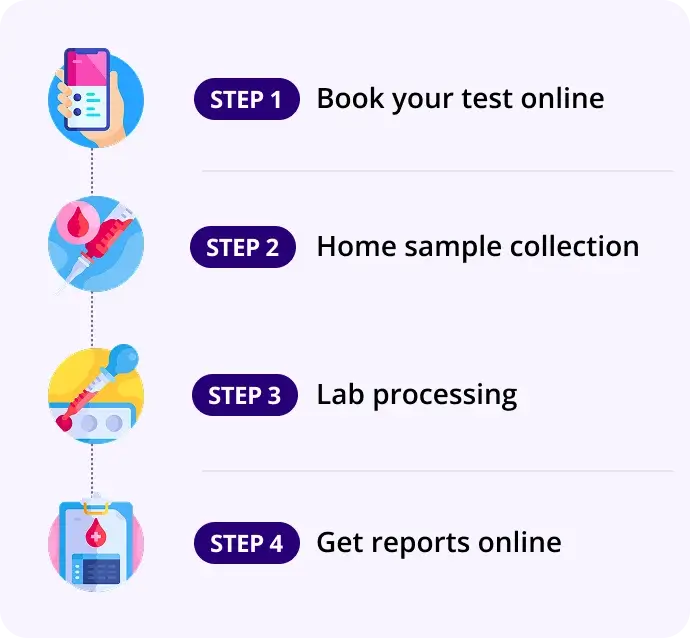Body Fluid Analysis - Plerual Fluid
Report in 60Hrs
At Home
No Fasting Required
Details
Pleural fluid is the lubricating fluid that lies between the parietal pleura (chest wall) and the visceral pleura (lung surface). A pleural effusion occurs when excess fluid accumulates in this space — often due to infection, malignancy, or systemic illness
₹350₹1750
80% OFF
🧪 Pleural Fluid Analysis
Parameter | Details |
|---|---|
Test Name | Body Fluid Analysis – Pleural Fluid |
Sample Type | Pleural fluid (collected via thoracentesis) |
Fasting Required | ❌ Not required |
Primary Organs | Lungs & Pleura (lining of the lungs) |
Common Diseases | Pleural effusion, tuberculosis, pneumonia, cancer, congestive heart failure |
🧬 What Is Pleural Fluid?
Pleural fluid is the lubricating fluid that lies between the parietal pleura (chest wall) and the visceral pleura (lung surface). A pleural effusion occurs when excess fluid accumulates in this space — often due to infection, malignancy, or systemic illness.
🧫 Purpose of Pleural Fluid Analysis
This test helps determine the cause of a pleural effusion by analyzing the composition of the fluid.
Primary Goals |
|---|
1. Distinguish transudate vs. exudate effusion |
2. Identify infection (bacterial, TB, fungal) |
3. Detect malignancy (cancer cells) |
4. Look for autoimmune/inflammatory causes |
📊 Key Parameters Measured
Parameter | Clinical Significance |
|---|---|
Appearance (color) | Clear, cloudy, or bloody; helps detect infection, malignancy, or trauma |
Cell Count & Differential | Detects WBCs (infection, TB), RBCs (trauma, malignancy) |
Protein | Elevated in exudates (infections, malignancy); low in transudates (CHF, cirrhosis) |
LDH | ↑ in exudates due to tissue breakdown |
Glucose | ↓ in TB, rheumatoid effusion, empyema |
pH | ↓ in infections and rheumatoid pleuritis |
ADA (Adenosine Deaminase) | High in tuberculosis pleurisy |
Gram Stain & Culture | Identifies bacterial infections |
AFB Smear / TB PCR | Detects tuberculosis bacilli |
Cytology | Identifies malignant cells from cancers (lung, breast, etc.) |
🔍 Transudate vs Exudate – Light’s Criteria
An effusion is considered exudate if any one of the following is true:
Criteria | Exudate if: |
|---|---|
Pleural fluid protein / serum protein > 0.5 | Suggests exudate |
Pleural fluid LDH / serum LDH > 0.6 | Suggests exudate |
Pleural fluid LDH > 2/3 upper limit of normal serum LDH | Suggests exudate |
Transudates are usually due to systemic causes like:
- Congestive heart failure
- Liver cirrhosis
- Nephrotic syndrome
Exudates are typically due to local pleural disease like:
- Tuberculosis
- Pneumonia
- Pulmonary embolism
- Malignancy
⚠️ Common Indications for Pleural Fluid Analysis
- Unexplained shortness of breath
- Chest pain
- Abnormal chest X-ray (e.g. pleural effusion)
- Suspected TB, pneumonia, cancer, or autoimmune disease
🧪 Recommended Additional Tests with Pleural Fluid
Test | Purpose |
|---|---|
Chest X-ray / CT Thorax | Visualize effusion or masses |
CBC & ESR | Look for systemic inflammation |
Blood cultures (if febrile) | Detect systemic infection |
Serum protein, LDH | Needed to calculate Light’s criteria |
TB PCR or GeneXpert | Detects Mycobacterium tuberculosis |
Pleural biopsy (if malignancy suspected) | For histopathological confirmation |
📝 Summary Table
Test | Pleural Fluid Analysis |
|---|---|
Sample Collection | Thoracentesis (needle aspiration of pleural space) |
Main Uses | Diagnose infection, cancer, TB, heart/liver/kidney disease |
Key Markers | Protein, LDH, Glucose, ADA, Cytology, Culture |
Transudate vs Exudate | Determined using Light’s Criteria |
How our test process works!

